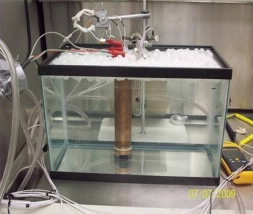FOR IMMEDIATE RELEASE
ACS News Service Weekly PressPac: March 19, 2010
Cold fusion moves toward mainstream acceptance
EMBARGOED FOR RELEASE: Sunday, March 21, 11:40 a.m., Eastern Time
A potential new energy source so controversial that people once regarded it as junk science is moving closer to acceptance by the mainstream scientific community. That’s the conclusion of the organizer of one of the largest scientific sessions on the topic — “cold fusion” — being held here for the next two days in the Moscone Center during the 239th National Meeting of the American Chemical Society (ACS).
The presentations describe invention of an inexpensive new measuring device that could enable more labs to begin cold fusion research; indications that cold fusion may occur naturally in certain bacteria; progress toward a battery based on cold fusion; and a range of other topics. Marwan noted that many of the presentations suggest that cold fusion is real, with a potential to contribute to energy supplies in the 21st Century.
The term “cold fusion” originated in 1989 when Martin Fleishmann and Stanley Pons claimed achieving nuclear fusion at room temperature with a simple, inexpensive tabletop device. That claim fomented an international sensation because nuclear fusion holds potential for providing the world with a virtually limitless new source of energy. Fuel for fusion comes from ordinary seawater, and estimates indicate that 1 gallon of seawater packs the energy equivalent of 16 gallons of gasoline at 100% efficiency for energy production.
![]()
Contact
Science Inquiries: Michael Woods, Editor, 202-872-6293
General Inquiries: Michael Bernstein, 202-872-6042

this water bath, provides the first inexpensive
means of identifying the hallmark of cold
fusion reactions: the production of excess
heat.
Credit: Melvin Miles
(High-resolution version)

